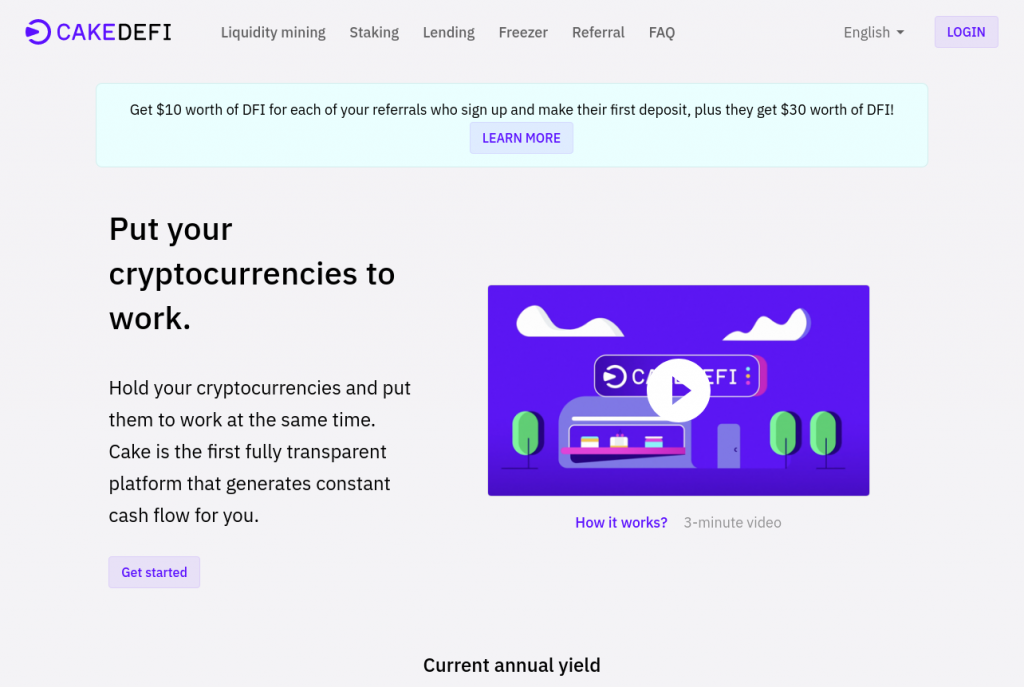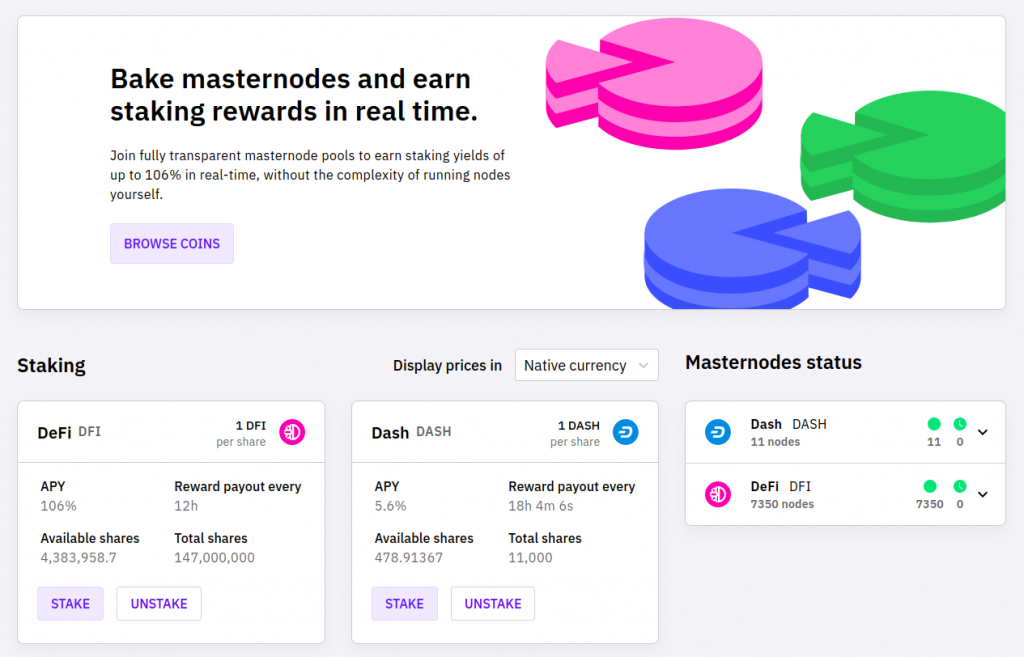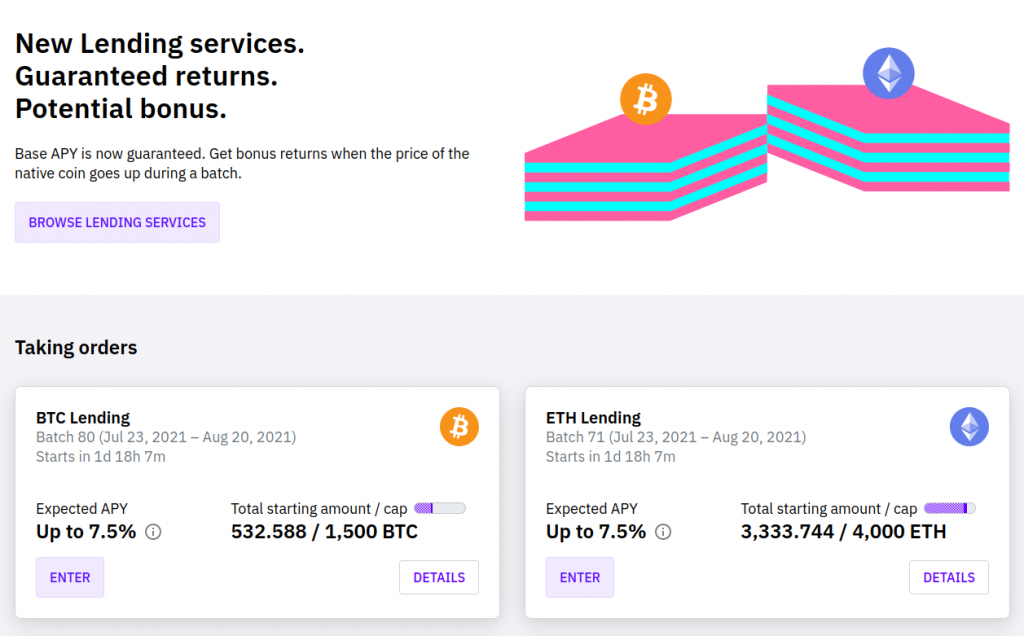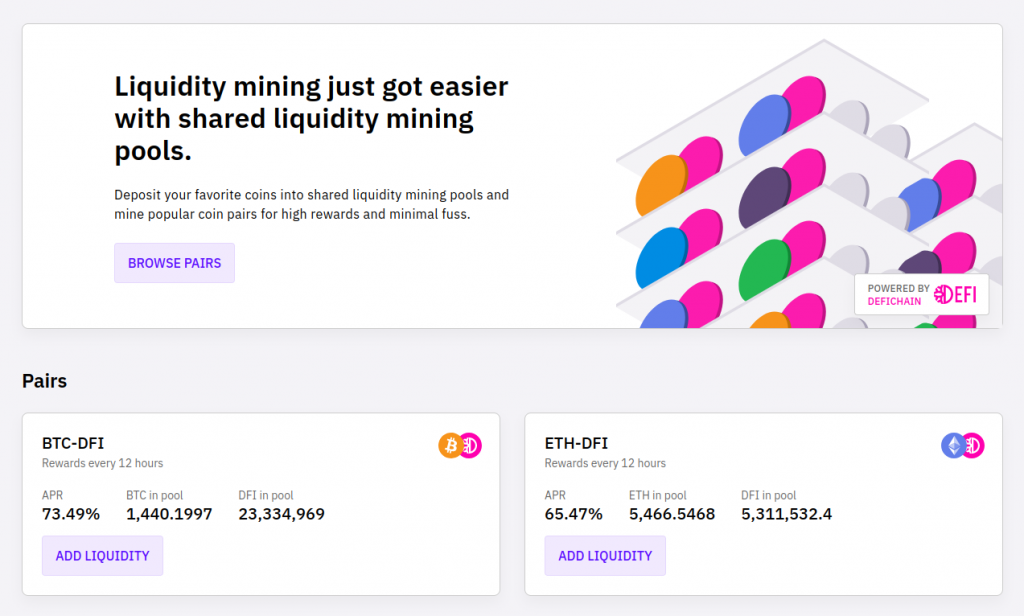CakeDeFi Review – Crypto Savings Platform Through Staking & Lending

Cake DeFi experience: 100% return with CAKEDEFI ?
100% Return on Investment with CAKEDEFI? Read this Cake DeFi experience now and make your own picture of the promising opportunities on this highly interesting crypto platform.
All texts in this article about Cake DeFi experiences and more as well as the notes and information do not constitute investment advice, recommendation or solicitation to sell/buy assets, cryptocurrencies, securities, or the like. They serve only as non-binding and general information.
Staking: Secure blockchain without power and climate worries
There is a way, while your crypto assets are sitting idle in your wallet, to make money with them passively. One of them is staking, a promising way to earn high regular returns (e.g. via Cake DeFi).

Staking is basically a low-cost, low-energy alternative to traditional proof-of-work with the computationally intensive mining that goes into the Bitcoin blockchain. The staking concept was first introduced in 2012. Sunny King and Scott Nadal presented the peer-to-peer cryptocurrency Peercoin.
It was the reward for the proof-of-stake (PoS) consensus algorithm. Since then, many other cryptocurrencies have implemented this staking approach into their systems. Proof-of-stake is used to ensure the security of the network, validate transactions, and ensure the trust of participants through technical means, which requires intermediaries outside of the blockchain, such as a notary, banks, or the like.
A PoS miner is limited to mining a percentage of the blocks in the blockchain that corresponds to its ownership share of the cryptocurrency. For example, a miner who owns 2% of the available cryptocurrency can theoretically mine only 2% of the blocks.
The problem of a 51% attack in proof-of-work is eliminated in proof-of-stake. In PoS, the attacker would need to own 51% of the cryptocurrency to perform a 51% attack. Proof-of-stake avoids this disaster by making it a disadvantage for a miner with a 51% stake in a cryptocurrency to ever attack the network.
Regardless of the fact that it would be difficult and expensive to acquire at least 51% of a reputable cryptocurrency, it would not be in the best interest of a miner with a 51% stake in the cryptocurrency to attack a network in which it holds a majority stake.
If the value of the cryptocurrency falls, it means that the value of his share would fall as well. Thus, the owner of the majority share would have a greater incentive to run a secure network rather than corrupt it.
Earn money passively with Staking on Cake DeFi
So how can you make money as a crypto investor with proof-of-stake on Cake DeFi, and even with a regular cash flow?
Crypto Staking is comparable to getting some interest income on your bank accounts. Similarly, in the crypto world, you can keep your coins in a wallet for a longer period of time. The idea is that you get more coins added to your wallet as compensation. The more you stack, the more you get those rewards.
It makes the interest compounding effect noticeable the longer you are in staking. With current ridiculously low interest rates and relatively higher annual inflation (decrease in purchasing power), the money you have saved in your bank accounts will be eaten up over time. While the amount of money remains the same, the money simply loses value.
This is where staking offers itself as a lucrative alternative. Proof-of-stake involves putting coins or tokens into so-called “nodes” to verify transactions for cryptocurrencies that use a proof-of-stake consensus mechanism.
Let’s get specific now using a provider for staking where I personally do the staking, namely Cake DeFi. Anyone who stakes coins with Cake DeFi now has the opportunity to participate in these nodes with attractive interest rates, even as a private investor without technical experience and with only limited capital.
Let your cryptos work for you in a relaxed way on Cake DeFi
Cake DeFi launched in early 2019 as a company dedicated to solving people’s big financial problems. Currently, Cake DeFi is one of the fastest growing blockchain startups in the Asian market and has over 100,000 customers worldwide. They have a LinkedIn company profile.
The founders of Cake Defi are Dr. Julian Hosp and U-Zyn Chua. Each of them has a very impressive background and extensive experience. Dr. Julian Hosp is considered the most prominent cryptocurrency expert in the entire German-speaking world. He maintains the largest German-language channel on blockchain on Youtube. U-Zyn Chua developed one of the first crypto exchanges in Asia. He has also worked on a blockchain project for the Singapore government.
Cake DeFi provides several ways to make your cryptocurrencies work for you to generate passive income.

Staking returns vary widely from coin to coin. In general, the longer a cryptocurrency has been around, the lower the returns. This can be seen as an analogy to Bitcoin halving (a reduction in the rate of issuance implemented in the code), as there are often halvings (an intentional reduction in the rate of return) as in Bitcoin.
It should be noted that staking is, after all, not a consensus algorithm of Bitcoin, but of other cryptocurrencies. Should you want to use Staking as a source of income for your investments, you need Coins in which Proof-of-Stake is applied and Staking is offered. In the context of Cake DeFi, the cryptocurrency DeFiChain (DFI) might be suitable.
100% Return with Cake DeFi ?
At the time of writing, you would get over 98% annual return in staking DFI. This percentage is just currently exceptionally high. It is usually around 30% in my experience with Cake DeFi. Currently, the return is over 100% if you are staking the cryptocurrency Defichain.
Besides staking, Cake DeFi has another way to get solid returns of up to 8% per year. You have the opportunity to benefit from the lucrative yet safe investment strategies that have long been reserved only for institutional investors. This is done by lending money to major crypto exchanges. Trusted partners like Genesis, Signum or Sparrow cover the risks and also guarantee the returns that Cakedefi pays out to you.

In contrast, Cake DeFi offers more risk-averse investors massively higher returns through a third investment avenue. With a so called Liquidity Mining you currently get in some cases close to 100% annual returns.
Now you will ask yourself how such high returns are possible at all? The answer is simple: With liquidity mining, you provide liquidity to a decentralized exchange and thus enable decentralized trading. In return, you receive a portion of the trading fees as well as a share of the block distributions based on your share of the liquidity pool. Don’t discount the risk of a temporary loss. However, according to empirical data, the expected returns so far are significantly higher than the potential loss.
Other platforms besides Cake DeFi
The interest rates and yields given here may of course have changed by the time you read this. You can find all the latest details on Cake DeFi’s website. To some readers, this section on Cakedefi may sound like something out of an advertising brochure. However, this is not my intention at all. I personally use Cake DeFi, but you can of course use any other reputable provider for staking (e.g. Crypto.com), as long as you choose this form of crypto investment.
Should you decide to use Cake DeFi, you will receive a startup bonus of up to $30 as a gift via this Link. Yes, it is a so-called affiliate link, where I also receive a small commission. But because of the bonus for you, I decided to give the link here.
In fact, other platforms, e.g. Binance also offer the possibility to stake cryptocurrencies and thus collect lucrative interest. Since I am mainly targeting beginners here, I mention Cake DeFi because I rate this platform as beginner and user friendly.
Cake DeFi experiences
So far I have had very good Cake DeFi experiences.
I see staking as an opportunity to diversify my investments. I still have a large part of my crypto investments simply sitting in the wallet, with the hope of selling them at some point in the future for large profits, or to use cryptocurrencies as an everyday means of payment when fiat currencies collapse, which cannot be ruled out.
I only allocate a portion of my crypto assets to staking. One of the main risks of staking is the possibility of buying an inferior cryptocurrency because it pays high returns, rather than because it is a high-value project. Typically, staking income is paid in the same cryptocurrency. When its price drops to zero, the passive income will be worth nothing as well.
Often, you need to keep your funds in a “hot” online wallet to stake them, which is riskier than keeping them in a cold wallet. Staked coins are locked in the wallet for a certain period of time. Until this time has passed, you are not allowed to sell your staked holdings. If you want to earn passive income with staking (e.g. on Cake DeFi), it is just as important as with all other options to be careful and do thorough research.
